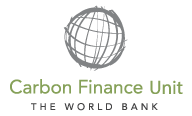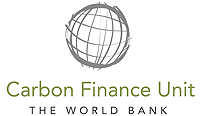
Five years before the Kyoto Protocol entered into force, the World Bank and its partners in the Prototype Carbon Fund (PCF) established the first global carbon fund in 2000 to create demand for carbon credits and to gain experience in Kyoto Protocol project-based mechanisms such as the Clean Development Mechanism (CDM) and Joint Implementation (JI). These mechanisms, along with subsequent carbon funds and facilities, helped catalyze a nascent market for emission reductions which has since seen dramatic changes.
Carbon finance at the World Bank
From the perspective of The World Bank, climate change and development are unequivocally linked. The Bank’s work tackles these global issues from multiple angles, covering a broad spectrum of interventions that promote sustainable development. These, among other things, include:
-
Creating an environment that supports discussions that help accelerate work on climate change mitigation and adaptation;
-
Developing methodologies and ground-breaking financial mechanisms linked to carbon finance;
-
Supporting climate mitigation through market mechanisms;
-
Implementation of the next generation of sustainable development activities.
The Carbon Finance Unit at the World Bank approached sustainable development from a unique perspective: facilitating climate change mitigation action through carbon markets. For over 20 years, the unit, now called the Climate Finance Fund Management Unit, has been a global leader and innovator in this market space, engaging with governments, international organizations, Indigenous Peoples, civil society and the private sector to build capacity in developing and low-income countries. A particular focus has been sectors such as forests and agriculture and efforts to expand the benefits of the Clean Development Mechanism, Joint Implementation and other offset standards and transactions.
First generation of World Bank carbon funds
The World Bank Group launched the first global carbon fund, the Prototype Carbon Fund (PCF), in April 2000. Over the following seven years, another 11 Kyoto funds and facilities were launched at the World Bank Group to pioneer a range of flexibility mechanisms to enable emissions to be reduced cost-effectively. These include:
The Kyoto Protocol
The first generation of funds worked primarily through mechanisms under the Kyoto Protocol, including the Clean Development Mechanism (CDM), Joint implementation (JI) and Emissions Trading through Green Investment Schemes (GIS). In a handful of cases, the World Bank developed projects under the Verified Carbon Standard (VCS).
Emission Reductions Achieved
The first generation of carbon funds produced over 200 million t-CO2e in certified offsets across four different mechanisms or standards and five different carbon asset types. Another 1.025 million t-CO2e were verified or reported but could not be converted to a certified offset.
|
Mechanism/Standard |
Volume (t-CO2e) | Carbon Asset |
|
1. Clean Development Mechanism (CDM) (non-LULUCF) |
158,610,921 | Certified Emission Reductions (CER) |
|
2. Clean Development Mechanism (CDM) (LULUCF) |
8,464,624 | temporary Certified Emission Reductions (tCER) |
| 3. JI | 4,137,486 | Emission Reduction Unit backed by Assigned Amount Unit (AAU) |
| 229,641 | Emission Reduction Unit backed by Removal Unit (RMU) | |
| 4. ET via GIS | 33,631,314 | Assigned Amount Unit (AAU) |
| 5. VCS | 861,048 | Verified Carbon Units (VCU) |
| Total | 205,935,034 |
Community Development Carbon Fund (CDCF)
Spanish Carbon Fund (SCF) Tranche 1
Netherlands European Carbon Fund (NECF)
Umbrella Carbon Facility (UCF) Tranche 1
Spanish Carbon Fund (SCF) Tranche 2

